High pitch squeel from drip irrigation line
Flash48
9 years ago
Featured Answer
Comments (8)
Flash48
9 years agoRelated Discussions
drip irrigation/timer question
Comments (1)I have an orchard. I put in posts and wire to suspend the main line around 2 feet off the ground. There is some buried main line as well, but I don't like having too many buried lines because if they should leak it might take quite some time before you notice, and quite a long time to find the leak location. Burying one relatively short line shouldn't' be a problem, though. You could use garden hose as your main line and move it when you mow. You can connect your system to use the rain barrel at all times. Use your garden hose to manually fill up the rain barrel when needed. Or you could even use a float valve to automatically top off the rain barrel from the hose. Then everything would be zero pressure. I think a hose timer will work OK with zero pressure. So you could have branch A be main line, back-flow preventer, pressure reducer, hose bib A. Branch B would be water barrel, hose bib B. Connect the hose timer to hose bib A when you are home, and hose bib B when you are out. Don't forget to turn on the hose bib before you go on vacation! If you can get your rain barrel 10 feet above your garden, everything will work much better. If you only have one or two feet of pressure, even drip irrigation might not work very well. I believe most drip irrigation is designed to work at 5 psi (hopefully someone will correct me if I am wrong). That is like 11 feet of water pressure, I believe. --McKenzie...See Morelawn irrigation combined with drip irrigation
Comments (15)AM, Yes most controllers are not as flexible as you would like. The more money the more flexibility. I am not even aware of a 6 program controller. Someone may know. What was the old one that you used? I just need to gather more information from you to make an informed suggestion. I need to know your flow rate of your water source. Is your system off a outdoor house faucet or the mainline from your house before your house pressure regulator? If a hose faucet, then fill a five-gallon bucket and time how long to fill. Give us the time to fill 5-gallons. Next is the drip ones, how long or how many and what spacing and the type of drip lines or emitters? How many sprinklers and what Brand/type for each zone? What I am looking for is flow rates of drip tape or emitters to calculate the water demand for each zone. This is like a design in reverse which is a water audit. If you don't have all the info give me as much as you can. Finally, what is your water pressure? Buy an inexpensive pressure gauge that fits on your faucet from hardware store. When I can tell what zone uses what amount of what, then you can tell what zones can run simultaneously and the ones that need extra time can be at a later time and duration. You might try buying another Controller and hook three zone to one and 3 zone to another for the 6 programs you need. JMHO Aloha...See MoreDrip Irrigation Design question
Comments (3)Seth, Will the faucet be the permanent connection for the irrigation to the trees? You could probably get away with flexible pipe on grade if there isn't much traffic in the area. Just make sure to secure it to the ground with u hooks so that if you do walk by you don't take yourself out! What kind of trees are they, that would impact how much water you need to get to them......See MoreAdding low pressure drip irrigation to existing system?
Comments (10)One suggestion is to find a sprinkler head you don't need (like a popup sprinkler used for shrubs that are mature enough that they no longer need irragation) or you can install a new 1/2" outlet to your existing system. Then all you need to do is attach a drip head conversion kit. It allows you to run up to eight 1/4" microtubes from the single head and you can regulate the flow/pressure to each tube. You can buy the converter at the big box stores. I've used them for years and have had no problems with pressure. I've included a link to the conversion kit sold on the Drip Store. Here is a link that might be useful: Drip Store Head Conversion Kit...See MoreSandra Caravanos
3 years agoHU-736394927
3 years agoCee
2 years agoKathy Burrow
last yearlast modified: last yearSteven Haal
last yearnanelle_gw (usda 9/Sunset 14)
last year
Related Stories
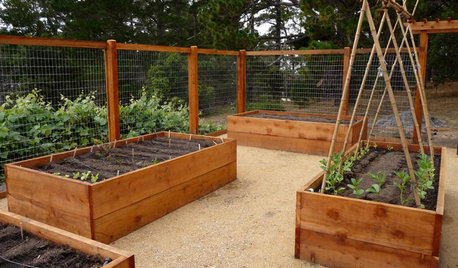
GARDENING GUIDESHow to Install a Drip Irrigation System
Save time and water with a drip watering system in your vegetable garden — a little patience now will pay off later
Full Story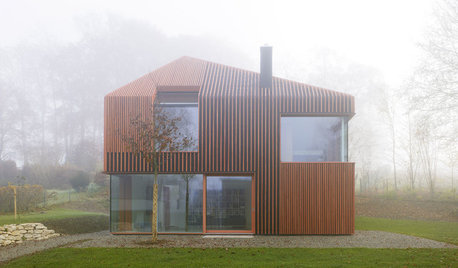
ARCHITECTUREPitched Roofs Make a Point in Modern and Contemporary Homes
Flat roofs may be the modernist standard, but angled ones say 'home' loud and clear. See how architects are giving pitches a place today
Full Story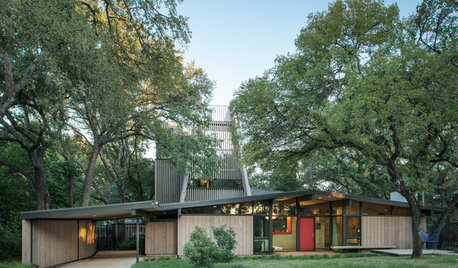
HOUZZ TOURSHouzz Tour: New Tower Rises From a Midcentury Ranch House
An Austin homeowner and her architect expand on the original vision of A.D. Stenger, who designed the ’60s-era home
Full Story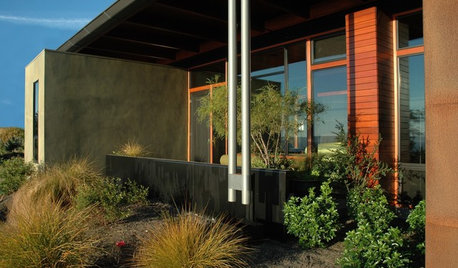

FARM YOUR YARDAdvice on Canyon Farming From L.A.'s Vegetable Whisperer
See how a screened garden house and raised beds help an edible garden in a Los Angeles canyon thrive
Full Story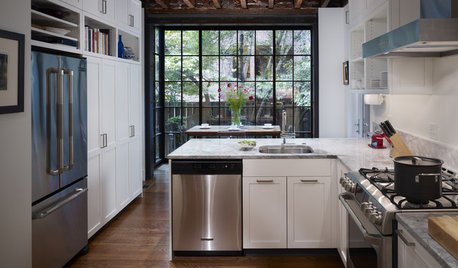
FEEL-GOOD HOME12 Very Useful Things I've Learned From Designers
These simple ideas can make life at home more efficient and enjoyable
Full Story
LAUNDRY ROOMSSoak Up Ideas From 3 Smart Laundry Rooms
We look at the designers’ secrets, ‘uh-oh’ moments and nitty-gritty details of 3 great laundry rooms uploaded to Houzz this week
Full Story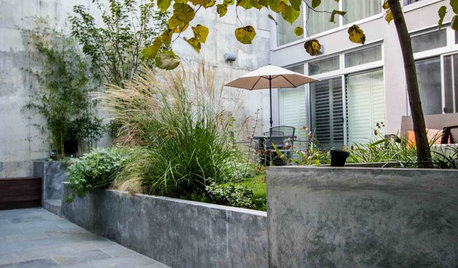
URBAN GARDENSFrom Concrete ‘Jail Yard’ to Lush Escape in Brooklyn
Once stark and uninviting, this urban backyard is now a welcoming retreat for relaxing and entertaining
Full Story
LANDSCAPE DESIGNEasy Ways to Manage Stormwater for Lower Bills and a Healthier Earth
Send cleaner runoff into local waterways and spend less on yard irrigation with these simple landscaping approaches
Full Story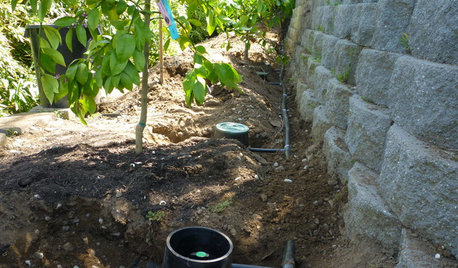
EARTH DAYGrow a Beautiful Garden With Ecofriendly Greywater
Reducing home water waste means lower bills and a healthier planet. Here's how to set up a greywater home irrigation system that can help
Full StorySponsored
Professional Remodelers in Franklin County Specializing Kitchen & Bath



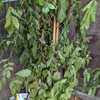
jean001a